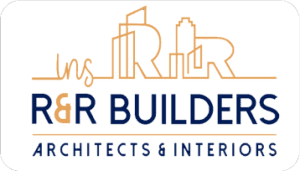Beginner’s Guide to House Construction
house construction from the ground up is a huge undertaking that needs careful design, expert labour, and cautious execution. To guarantee a successful and fulfilling conclusion, newbies starting this path must have a solid awareness of the intricacies involved in house construction. We’ll examine every phase of the building process in this extensive guide, offering in-depth analysis and useful advice to help you get started and succeed in the fascinating world of custom house building.

1. Making arrangements and getting ready
There must be careful planning and preparation before building can start. There are multiple crucial milestones in this phase:
Site Selection: Pick a good spot for your new house by taking into account things like accessibility to services, neighbourhood laws, and environmental aspects.
Architectural Design: Collaborate with designers and architects to produce a personalised elevation and floor plan that suits your tastes, way of life, and price range.
Permits and Approvals: Obtain necessary permits and approvals from local authorities, including building permits, zoning clearances, and environmental assessments.
Finance and Budgeting: Create a thorough budget that covers all building-related expenses, such as supplies, labour, permits, and backup plans. To fund the project, obtain financing from a lender or other financial organisation.
2. Setting Up the Site
House construction site needs to be ready for construction when the design stage is finished. Usually, this entails the following actions:
Grading and clearing: While house construction remove any lingering buildings, plants, or debris from the site. To guarantee appropriate drainage and a level building pad, level the terrain.
Utility Connections: Make arrangements for the delivery of gas, electricity, water and sewage connections to the location.
Environmental Considerations: In accordance with local laws, take care of any environmental issues, such as soil erosion, protecting wetlands, or providing habitat for endangered species.
3. Building Foundations
The entire home is supported structurally by the foundation. There are various popular foundation types that are appropriate for various soil types and building needs. These include:
Slab-on-Grade: A concrete slab that is placed directly onto the ground; ideal in moderate climates and regions with stable soil conditions.
Crawl Space: A shallow area beneath the home with an elevated foundation that allows for ventilation and utility access.
Basement: A subterranean foundation, typically found in colder climes, that offers extra space for living or storage.
Usually, formwork is used to create the foundation, and the concrete is then poured into it and strengthened with steel rebar for stability and strength.
4. Composition
The framing stage starts once the foundation is established. Building the house’s basic framework, which includes the walls, floors, and roof, is known as framing.
Wall framing: The outside and interior walls of a house are constructed from vertical studs spaced at regular intervals. Installing headers and sill plates is necessary to support opening like windows and doors.
Floor Framing: The house’s floors are constructed using horizontal joists or trusses. The finish flooring materials are then placed on top of the subflooring to create a sturdy platform.
Roof Framing: The roof structure is made of rafters or trusses, covered in roofing materials like metal, tile, or shingles, and encased in plywood or oriented strand board (OSB).
5. Roofs
After the framing is finished, the roof is put in place to defend against the weather:
Roof Structure: The roof’s pitch and shape, as well as any dormers, valleys, or other architectural elements, depend on the style of the home.
Roofing Materials: Metal panels, clay or concrete tiles, composite shingles, and asphalt shingles are examples of common roofing materials. Regarding cost, durability, and beauty, each material has pros and downsides of its own.
Waterproofing and Flashing: To stop water incursion, flashing is put in place around roof penetrations like vents, skylights, and chimneys. An extra layer of protection can be added to roofing materials by applying waterproof membranes underneath them.
6. Finishing on the outside and inside
After the home is enclosed, focus shifts to completing the external and internal areas:
External Finishes: To improve curb appeal and offer weather protection, siding, brick, stucco, or other cladding materials are added. You can also add trim, shutters, and other ornamental features.
Interior Finishes: Smooth walls and ceilings are achieved by hanging and finishing plasterboard. Installed flooring options include hardwood, tile,
carpet, and laminate. The kitchen and bathrooms are finished with the addition of cabinets, worktops, fixtures, and appliances.
Painting & Decorating: To add colour and texture, surfaces both inside and outside are painted or stained. Wainscoting, moulding, and trim are examples of decorative components that can be added to a room to improve its aesthetic appeal.
7. Mechanisms of Action
Installing the necessary mechanical systems to ensure comfort, convenience, and safety in the house comes next:
Plumbing: Licenced plumbers install water supply lines, drainpipes, and fixtures like sinks, toilets, and showers.
Electrical: To supply power throughout the house, licenced electricians install outlets, switches, wiring, and lighting fixtures.
Heating and Cooling: To control indoor temperature and air quality while house construction, HVAC (heating, ventilation, and air conditioning) systems are installed. This could involve thermostats, ducting, heat pumps, and furnaces.
Additional Systems: Home automation, security alarms, fire sprinklers, and renewable energy systems like solar or geothermal heat pumps are examples of additional mechanical systems.
For comfort, safety, and energy efficiency, these systems must be installed and maintained properly.
8. Closing Verifications and Moving In
Building code inspectors must conduct final inspections of the home before it is ready for occupancy to make sure all safety and quality requirements are met:
Building Inspection: To ensure that all mechanical, electrical, plumbing, and structural systems adhere to code standards, a thorough inspection is carried out.
Certificate of Occupancy: Following a successful final inspection, the home is granted a certificate of occupancy (CO), attesting to its safety and suitability for living.
Move-In: Once you have the CO, you may formally move into your new house and start furnishing it with furnishings and other personal touches.
9. Upkeep and Maintenance
To maintain a home’s value and guarantee longevity, ownership requires constant maintenance and upkeep:
Frequent Inspections: To find and fix any problems quickly, schedule regular inspections of the HVAC, plumbing, electrical, and roof systems.
Maintenance and Improvements: house construction Set aside money for any necessary improvements and repairs to alleviate wear and tear, preserve functioning, and boost energy efficiency.
Seasonal Maintenance: In order to get ready for changing weather, conduct seasonal maintenance chores including clearing gutters, maintaining HVAC systems, and caulking windows and doors while house construction
You can preserve your investment and continue to enjoy your house for many years to come if you practise proactive maintenance and upkeep.
To sum up, building a house is a challenging yet gratifying process that calls for meticulous planning, knowledgeable labour, and close attention to detail. By adhering to this thorough guide,


